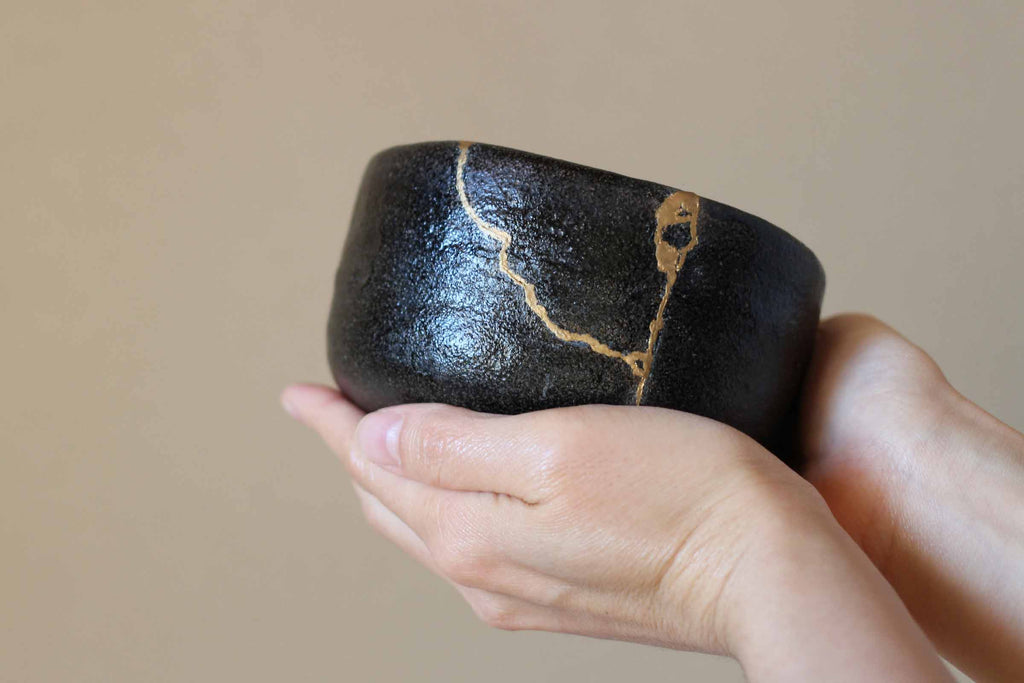Welcome to the fascinating world of Kintsugi (金継ぎ), the Japanese art that transforms breakages into renewed beauties. In this article, we will delve into the history behind Kintsugi, its connection with tea ceremonies, and the profound philosophy that teaches us about strength in repair. This millennia-old art form teaches us that damaged things can be transformed into something even more precious, celebrating the beauty of imperfections.

History of Kintsugi: Where Breakage Becomes Beauty
Kintsugi traces its roots back to ancient Japan, dating back to the 15th century. During the Muromachi period, a Japanese noble, Ashikaga Yoshimasa, sent one of his favorite tea bowls to China for repairs. The bowl returned fixed with bothersome scratches and metal clips, prompting Yoshimasa to turn to local artisans for a more elegant solution.
Impressed by Yoshimasa's perseverance, artisans decided to mix lacquer with gold, silver, or platinum powder, creating a mixture that, once dried, reveals a golden or silvery network embracing the cracks. Thus, Kintsugi was born, a practice that transforms repair into an opportunity to enhance and celebrate the object's history. Each cup, each object, becomes unique, with its story written visibly.
This process doesn't hide the scars but highlights them, creating a new form of beauty.
Kintsugi and Tea Ceremonies: A Deep Connection
In the context of tea ceremonies, Kintsugi forms a profound connection with the Japanese philosophy of wabi-sabi, celebrating beauty in impermanence and imperfection. The use of objects repaired with Kintsugi in these ceremonies symbolizes the beauty that emerges from vulnerability and the strength that can be gained through wounds.
In the practice of Japanese tea, Kintsugi becomes a powerful metaphor. Cups, marked by the scars of time and repaired with gold, reflect our own human experience. Like objects, we accumulate wounds throughout life, but it is through repair and growth that we become stronger and more beautiful.
The Philosophy of Repair and Strengthening in Everyday Life
Beyond tea ceremonies, Kintsugi has a valuable lesson to teach us all. Too often, we try to conceal our imperfections, to mask emotional scars. Kintsugi invites us to see these imperfections not as defects but as an integral part of our unique beauty.
Just as an ancient tea cup becomes more precious with golden scars, we, as humans, can emerge stronger and more beautiful from the challenges we face. Kintsugi reminds us that wounds are not to be hidden but embraced, transforming our vulnerability into strength.
Conclusion: Embracing the Philosophy of Kintsugi
Kintsugi, with its elegant fusion of repair and beauty, offers us a unique perspective on life and the challenges we encounter. Celebrating our imperfections, embracing scars as an integral part of our story, allows us to grow and thrive.
In a world that often pushes us towards perfection, Kintsugi encourages us to slow down, to recognize the intrinsic value of our experiences, to learn from the beauty that can emerge from fractures. Like in this philosophy, we can turn our scars into works of art, becoming stronger and more beautiful with every step of our journey.
Join us in celebrating Kintsugi, a practice that teaches us that imperfections are not to be hidden but embraced. Like tea cups, we are all unique and precious with our golden scars.